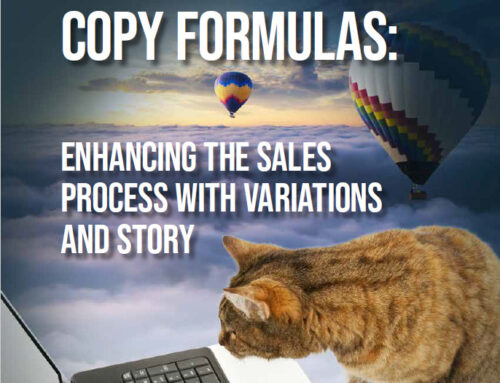You may be paying a content team to create a steady stream of content – that’s wonderful IF you and they understand the three critical reasons why you’re creating that content:
- To drive more Organic traffic
- To drive visitors to the next step you want them to take (to an Offer page or a product page)
- To drive more Referral traffic
Does your content team understand these roles – and focus on them?
Or are you more “compartmentalized” – where the content team creates the content, and someone else handles the SEO and adding appropriate links within the copy?
And does anyone focus on content distribution – getting that content out beyond social media sites? Or using that content in other formats?
Are Your Blog Posts Really Being SEO-Optimized?
I’ve been talking to a large multi-state company about improving their SEO efforts. No one, it seems, ever pays attention to SEO for new blog posts – yet the company is paying a monthly fee for SEO to their website management company.
If one of the reasons to create a blog post is to improve Organic traffic, it’s definitely harder to do that without optimized Page Titles and Descriptions for each blog post.
From spidering the site, what I see is that the content agency creates these long, specific headlines – which can be highly effective for drawing visitors into the copy on the page.
But then, because no one is paying attention to the SEO, the SEO plug-in on their site just uses the post headline as the SEO Page Title. And what happens is those too-long Page Titles get truncated on search engines – and the most important keywords (if they’re in the Page Title at all) may not appear at all.
(This is another reason why “automation”, in this case, some SEO “automation” without a strategy behind it, is rarely effective.)
That means that a great blog post may not drive any Organic traffic at all – just because Page Title hasn’t been optimized into a shorter, keyword-laden headline that gives the searcher a reason to click.
Are Your Blog Posts Part of a “Conversion Path?”
The company is also paying a social media team to post about this content. But what happens once someone gets to the blog post? Is that the goal – just to drive traffic there and nowhere else?
The second reason to create a blog post is to get the visitor started on a “conversion path” – with a link to an Offer related to the post topic or to a related product page.
Links to other pages (that appear on keywords, rather than “click here”) help with SEO – can also keep visitors on your site longer, viewing more pages – and they get more visitors to your key “action” pages.
Are you reviewing every blog post to see how to get those visitors started on a related “conversion path”? (Even better, when you’re just brainstorming topics with your content team, part of that brainstorming should be to know what next step each post should get readers to take.)
Get the Content Team Involved – and Somewhat Cross-Trained
With another client, I use this plan: every blog post draft that comes to me also proposes the category in which it should appear, the SEO Title, the SEO Description, and social media posts for Facebook, LinkedIn, and Twitter.
(I am the strategist – I write all the sales content for the website, for email campaigns, and for direct mail. Because I dictate the messaging, I also review every blog post and social media post before they’re posted. I’m responsible for website results – so I also coordinate the SEO effort.)
This client uses WordPress with an SEO plug-in (I like Rank Math, because it actually suggests keywords to the content team). I’ve explained to the content team how to use the plug-in to create more effective Page Titles and Descriptions.
This plan is a “win-win.” The content team is now more valuable, because they understand a little about how to help each blog post drive Organic traffic. As I review each post, I adjust the messaging to be sure the “why we’re different” is in there. I review the Page Title and Description before they’re used (modifying as needed), and I check to be sure we have a link (on keyword-laden text) to the related next step we want visitors to take.
With another client, I just go into their WordPress site and handle the messaging editing, SEO Title and Description, and conversion path links after a new blog post is loaded.
What about Content Distribution?
When you’re investing in creating new content, you want to get the most for that investment. Consider multiple ways to use every post.
For example, one client has produced a series of webinars they posted on their blog. We got the video transcripts and loaded them (with revisions) to each blog post, so the webinar post would now be more search-friendly (as well as ADA friendly).
We also took those videos and created a series of podcasts – to try to expand the distribution of that content. (And we loaded our podcast feed to a number of podcast directories.)
You could also do the reverse – create videos or podcasts from your blog posts. Now, you’d have a series of videos for YouTube and podcasts for the podcast sites.
If there’s one marketing resolution you make this year, let it be: “I will get more from every piece of content we produce.”
Need more help with improving your content marketing efforts? Our new BEST-SELLING book, “The Results Obsession: ROI-Focused Digital Strategies to Transform Your Marketing” is now available on Amazon!

The book includes chapters on Content Marketing, Lead Generation Offers, Messaging Strategy, Characteristics of Great Copy, Website Copy, Email Copy, SEO, and more.






Leave A Comment